4 Ways Email Marketing Automation for Customer Retention Can Grow Your Business
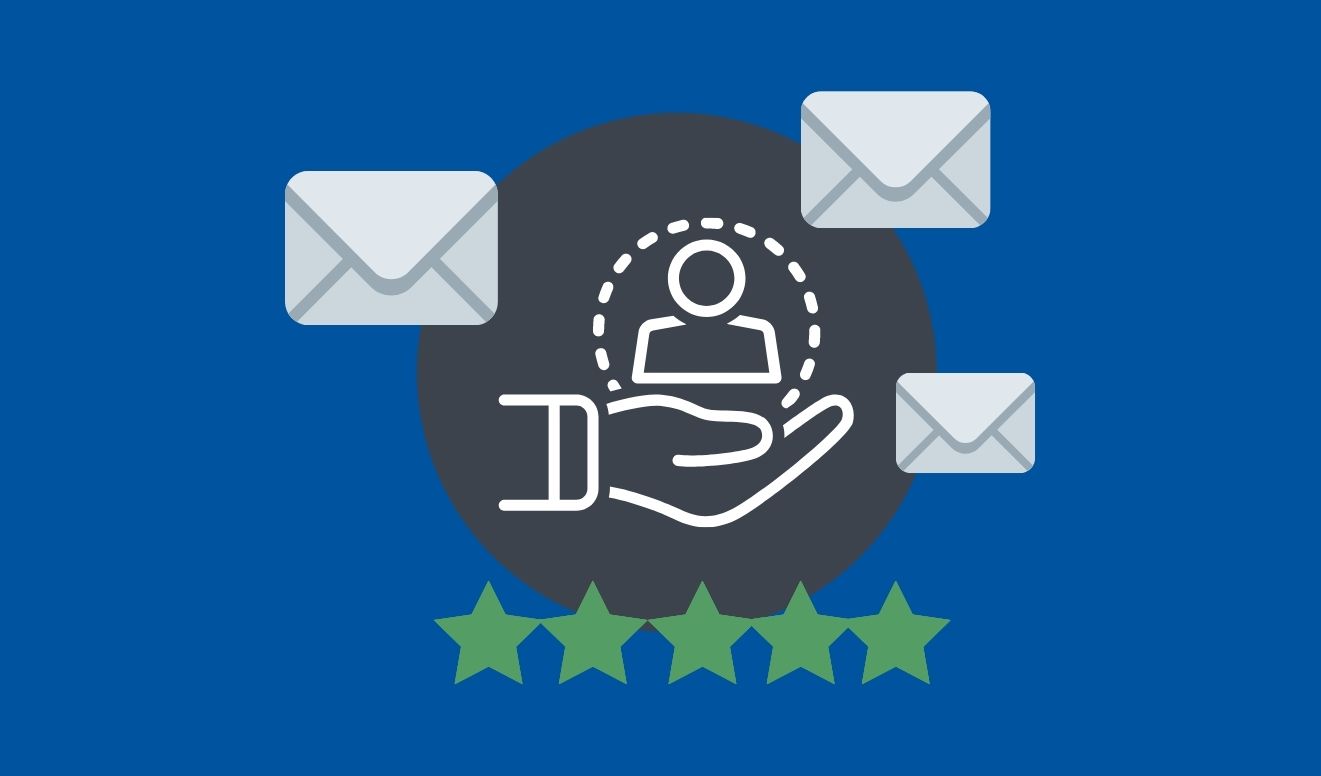
You’ve heard the saying “if you don’t use it, you lose it”, right? In the world of customer retention, if you don’t engage your customers via regular, targeted communication you’re leaving money on the table.
Increasing customer retention by only 5% can increase your profits by 25% to 95%. Not only that but customer acquisition is 5 to 25 times more expensive than investing in retaining existing customers.
Yet, 44% of businesses put greater focus on customer acquisition as opposed to only 18% who focus more on retention. Customer retention strategies take time to develop and produce results and, for many businesses, time is a limited resource. So, when a business wants to grow, working on lead generation seems like the natural next step.
Still, customer engagement doesn’t need to take any extra of your time. Using marketing automation software, you can automate many of the workflows that go into interacting with your current customers, saving time and making more money in the process.
In this guide, we cover four customer retention strategies you can implement using email marketing automation to grow your revenue:
Win repeat business through a sound customer retention strategy.
Offer rewards and customer loyalty programs.
Reduce shopping cart abandonment rate.
Improve customer retention rates by collecting regular customer feedback.
At the heart of all these strategies lies clean data, so we’ll cover how to streamline your data and be confident that your campaigns are targeted and personalized.
Want to see how clean data could help 6x the results of your email automation? Request your free data check today.
What is email automation?
You might have heard about it before, but still wonder “what is email automation?” Email automation helps you send timely, regular, and personalized emails to your target audience without any manual intervention on your part.
Once you segment your customer data, you can create email campaigns that drip emails at regular intervals or after a customer completes an action to send personalized and relevant communications.
Email automation for ecommerce is particularly powerful as you can collect customer data as soon as they land on your website and incentivize them to buy based on their behavior. Campaign Monitor has found that automated emails generate 320% more revenue than non-automated emails.That’s because automated emails can reach your customers at exactly the right time when they’re most likely to take action.
For example, a customer from the other side of the world was browsing shoes on your website. By the time you wake up and see your analytics, the customer might have already bought from elsewhere or forgotten all about buying shoes. However, your automated email can reach them within minutes of them leaving your website, nudging them to complete the purchase there and then.
ASICS, the global ecommerce clothing store, does a great job of leveraging their analytics and sending their almost buyers a little nudge after they leave the store without buying.

Depending on your needs, there are different types of email automation software tools you can use to streamline your communications. The key, though, is to look for a tool that is easy to use, ensures a high deliverability rate by checking the health of your contact list, and comes with automated workflows and scheduling features.
Here are a few email automation examples to get your creative juices flowing.
Win Repeat Business Through A Sound Upselling And Cross-Selling Strategy
You’re confident that your products are second to none, yet you see customers make one purchase and then disappear from the face of the Earth?
That’s because customer retention requires more than quality products and services. In today’s saturated market, you need to have a proactive customer retention strategy that understands and speaks to the deepest needs, pain points, and emotions of your customers.
In order to increase repeat business, incorporate upselling and cross-selling strategies in your customer retention efforts.
Upselling refers to offering customers add-ons or more expensive products or services related to their original purchase. For example, if a customer bought a laptop you might follow up with a special offer to buy a laptop case, screen protector, or custom-designed laptop covers. Or, if someone has bought your basic subscription package, you can prompt them to upgrade to premium.
Cross-selling is the “customers also bought” section you might see on an ecommerce checkout page. Only, you make these suggestions directly in their inbox. For instance, if somebody bought running shoes, you can follow with an email recommending other sportswear like running tops or leggings.
Apple does this very well by prompting their loyal customers to upgrade to the newest iPhone version by either buying it or doing a trade-in for their old smartphone.
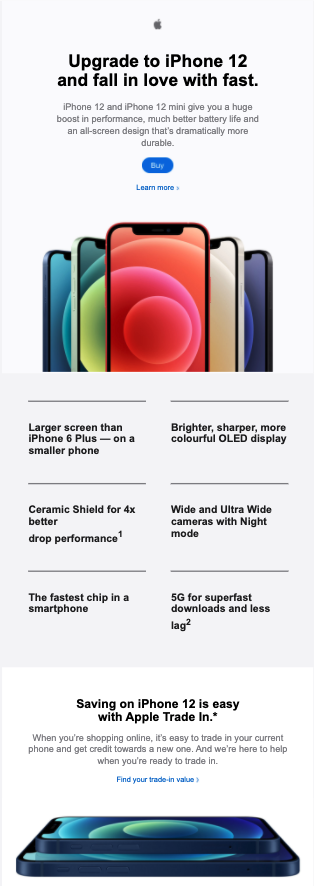
Your email automation for ecommerce needs to have a well-defined structure that enhances the overall user experience. Therefore, make sure that your upselling and cross-selling incentives flow naturally in the workflow and resonate with what your customers are interested in.
Automate these strategies by segmenting your customers based on:
The number of purchases - if a customer has already made several purchases from you in the span of a few months, you can already see patterns in their buying behavior. If they’ve bought many times before, they are far more likely to buy again.
The type of purchases they’ve made - segment customers by product category or type. For instance, if you have a customer who bought a boy’s jacket, it’s not far-fetched to imagine that they might also need boy’s sneakers or toys. You can create a drip campaign cross-selling related and relevant items.
Personal data - information like their age, sex, or location can be a treasure trove for your upselling efforts. Follow up with targeted emails like gym membership discounts in their town or a new line of products that are popular among their age group.
Browsing history - do you have one-time buyers who recently went on your website and checked out your fall/winter collection? Or did they download a new lead magnet about the best baby bottles of 2021? You know what you need to do - send those targeted emails to remind them to buy.
Regardless of which marketing automation platform you use, you should be able to use filters to split your contacts lists into different categories based on different parameters. Integrating your automation tool with your website will track each time your contact interacts with your brand and will assign a specific lead score. You can then use this score to trigger different communications.
Offer rewards and customer loyalty programs
75% of customers say they favor companies that offer rewards.
87% of loyalty program members accept brands monitoring their activities and behavior if it leads to more personalized rewards.
57% of customers spend more on brands on which they’re loyal.
The loyalty market was valued at $181 billion in 2019 and is expected to grow to $185-195 billion by 2022.
How to create a customer loyalty program?
It can be tempting to offer a guest checkout option on your e-commerce website, but enticing customers to leave their details is the first step towards creating your loyalty program. To avoid losing business, offer both options:
Guest checkout at a normal price.
Sign up to check out at a discounted rate.
If you remove the guest checkout option altogether you risk losing their business. However, getting their contact details is worth a small discount so give them both options. Engage your customers after their first purchase by sending a follow-up email that rewards them with credits towards their account. After they reach a certain level, give them a discount or a freebie.
Urban Outfitters, for instance, sends a very eye-catching email once a customer has reached a certain level to make them feel like a winner and give them a $5 discount.
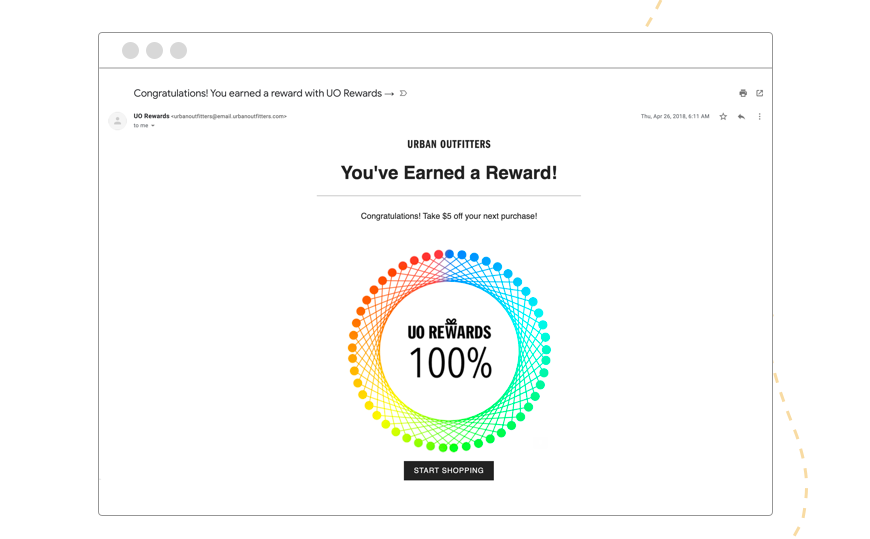
Not all customers are made equal and some will be bigger spenders than others. Segment your customers based on money spent or items purchased and create a loyalty program that reflects these groups. For instance, create a silver-gold-platinum loyalty program where customers move up the ladder as they spend more.
Some of the incentives you can offer are:
Freebies
Buy one, get one free
Limited-time discounts
Coupons for fixed amounts
To make sure your loyalty programs are a success, make joining the program and using the rewards an easy process. Sixty-nine percent of millennials report that most loyalty programs are difficult to join. That might be because of a lengthy sign-up process or a complicated workflow before customers can actually start to use their rewards.
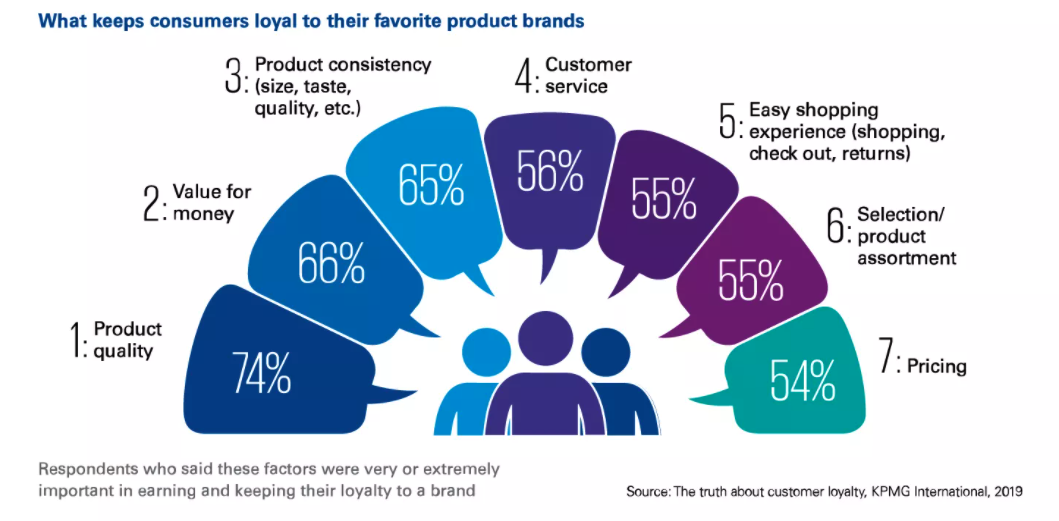
Source: The truth about customer loyalty, KPMG International 2019
Make this process frictionless by offering a simple signup process that doesn’t ask for many more details than absolutely necessary. Their name, birth date, and email might be all you need to get them started. You can mine for more information later on once they’re engaged with your brand.
Reduce shopping cart abandonment rate
Although conversion rates on ecommerce websites have seen a 5% YoY growth, the average shopping cart abandonment rate across all industries is still 88.05%. There are many reasons why potential customers don’t complete the purchase.
Some might be forecasting potential expenses or simply thinking about buying something without being actually ready to go through with the purchase. Still, these potential customers are hot leads you know for sure are interested in buying your products or services.
SalesCycle has found that cart abandonment emails have an open rate of 43%, one of the highest in the world of email marketing.
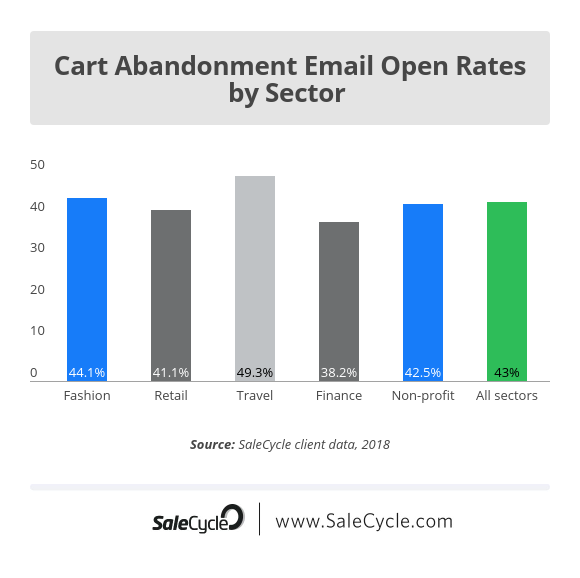
So, how can you capitalize on these insights? Using data segmentation, you can create different types of email automation workflows that further nurture your customers and nudge them to complete the purchase. For instance, you can create a specific workflow to follow up as soon as they leave their cart and a few days later offering them a special deal.
Good practices to observe here:
Use social proof to inspire action - Spiegel has found that online reviews for lower-priced products increase conversion rate by 190% while for higher-priced products the rate goes up to 380%. Use this to your advantage and embed some of these reviews in your follow-up email.
Keep it simple - people’s attention spans can take only so much. Keep your follow-up email nice and simple by highlighting the products they’d already selected during checkout. Avoid adding fluff, or other products at this stage as that might overwhelm them and make them skip on the purchase altogether.
Offer discounts - Give them a reason to come back. They might have abandoned the cart because the final sum was too much to bear. Or, they might have found a similar, but cheaper product elsewhere. Incentivize them to purchase from you by giving them a special discount exactly for the products they were looking to buy.
Your job can be easier if you’re targeting existing customers who might have clicked on one of your promotional emails or visited your website and then didn’t proceed with the purchase.
These customers are already familiar with your brand and products, so building trust might not be as impactful as giving them a special perk if they complete the purchase.
Improve customer retention rates by collecting regular customer feedback
Nine out of ten consumers value when a business knows their account history and current activities with that brand. If you’re already tracking how your customers behave and interact with your product, you can use that to your advantage to gain valuable insights.
Make sure you collect feedback about your products, services, and the overall customer experience when they interact with your brand. Make giving feedback easy and frictionless by embedding your survey within the email so that users don’t have to leave their inbox.
Your customer net promoter score (NPS) is one of the most important metrics when it comes to customer retention and business growth. The score is measured from -100 to 100 and is an indicator of how likely a customer is to recommend your brand to a friend or a colleague. Depending on how they score their likelihood (from 0-10), they’re counted as detractors if they score between 0-6, passives if they score 7-8, and promoters 9-10.
When sending out surveys, make sure you reach out to detractors and not only promoters in order to get a balanced view of your overall service.
Urban Outfitters do this as soon as someone makes a purchase to gauge their experience and engage them from day one.
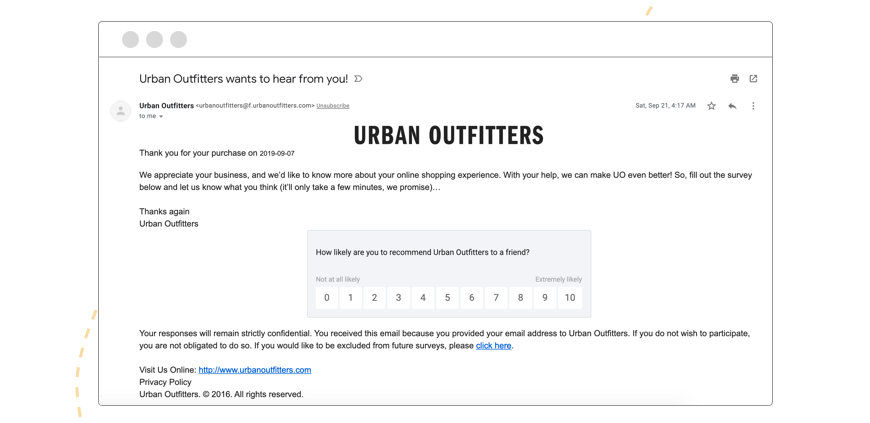
Customers like feeling heard. Once they’d shared their feedback, make sure your customer success team follows up with customers to either clarify some points, uncover opportunities for improvement or simply thank them for their time.
Email Marketing Automation For Customer Retention Relies On Clean Data
Poor data can cost a business, on average, $15 million a year. It can also undermine your business reputation and customer trust in your brand. Imagine this scenario. You store your customers' birthdates so that you can follow up with a special coupon and a happy birthday note on their special day. However, you’ve merged your data from two different CRMs and the date formats don’t exactly match.
So, you send a happy birthday email to a customer thinking their birthday is on 3 April, only to have them reply saying that their birthday was on 4 March.
The number of companies identifying themselves as being data-driven has fallen over the years from 37.1% in 2017 to 31% in 2019, despite major investments in big data and AI. Henry Schuck, founder and CEO at Zoominfo, estimates that 30-50% of CRM and ERP data is inaccurate.
This can hinder your sales, marketing, and customer retention efforts.
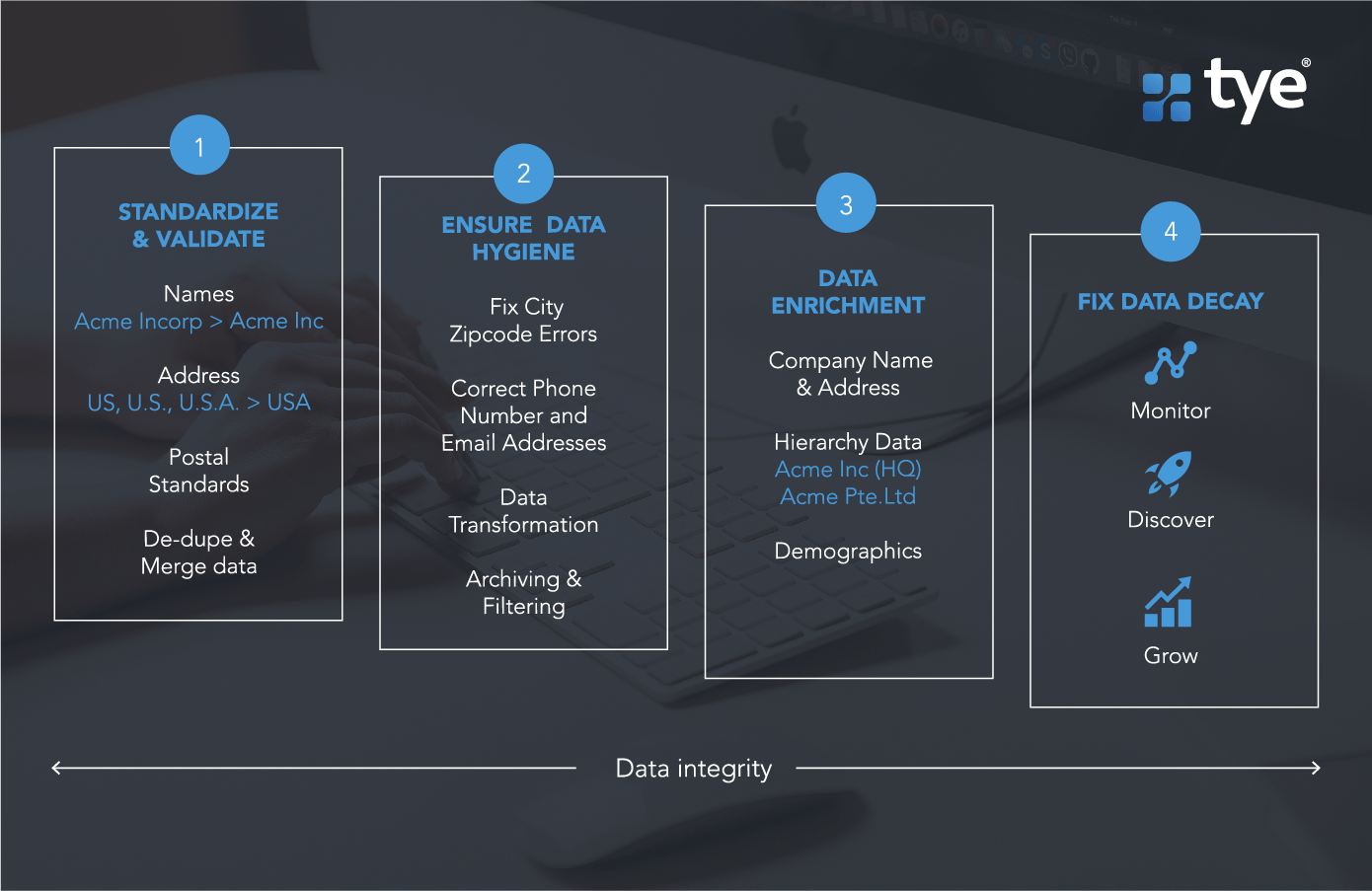
Here are some data cleaning steps you can observe:
Define your data nomenclature - are names stored as John Smith, Smith John, or John Stuart Smith? Do the same for address fields and dates.
Identify and remove duplicates.
Verify the validity of your data - have employees left companies? Are their email addresses still active?
Remove outdated or inactive customer data.
Depending on the size of your data set, you can perform these activities manually or you can decide to use data hygiene tools to help you streamline the process.
Your work doesn’t stop there. Once you’ve cleaned up your data, you need to make sure that your leads, customers, and any other contacts are properly segmented in your email marketing tool. When it comes to your email list management, there are several good practices that can improve engagement and protect your deliverability rate.
First, if you have a big list, yet very low open or click-through rates, perform A/B testing to see what works and what doesn’t. Second, do regular email list cleaning by removing disengaged contacts to avoid being flagged as a spammer.
Retaining current customers is just as important as nurturing new leads for business growth. While creating your customer retention strategy takes time, investing in email automation tools and clean data can save you time while boosting your revenue and improving your customer relationships long-term.
Tye is a digital assistant to your CRM and helps you clean, streamline and enrich your data so that you can be confident you’re always targeting the right audience, at the right time, and in the right way. Want to see how clean data could help 6x the results of your email automation? Request your free data check today.